Log in
Search
Latest topics
» Roger Harris revisitedby TD ABUSER Today at 2:13 pm
» Tee Dee .020 combat model
by Ken Cook Today at 1:41 pm
» Retail price mark-up.. how much is enough?
by Ken Cook Today at 1:37 pm
» Happy 77th birthday Andrew!
by getback Today at 11:52 am
» My latest doodle...
by roddie Today at 10:43 am
» My N-1R build log
by GallopingGhostler Yesterday at 3:04 pm
» Chocolate chip cookie dough.........
by roddie Yesterday at 1:13 pm
» Purchased the last of any bult engines from Ken Enya
by sosam117 Yesterday at 11:32 am
» Free Flight Radio Assist
by rdw777 Yesterday at 9:24 am
» Funny what you find when you go looking
by rsv1cox Wed Nov 20, 2024 3:21 pm
» Landing-gear tips
by 1975 control line guy Wed Nov 20, 2024 8:17 am
» Cox NaBOO - Just in time for Halloween
by rsv1cox Tue Nov 19, 2024 6:35 pm
Cox Engine of The Month
Cox Dragonfly
Page 1 of 1
 Cox Dragonfly
Cox Dragonfly
My last purchase of Cox engines was directly from Estes when they were under $8. I really purchased them just for spare parts. The Dragonfly was offered later then when I was purchasing 1/2A engines. I was aware of the engine, it never appealed to me because I believe it was for r/c use. Is it correct that this is a r/c engine? In and around 1997, I decided to go back to my 1/2A stuff and rebuild and repair many of my old models. Sadly, I gave my Black Widows and cherished Golden Bees away to others that supposedly wanted to learn to fly. I was on a quest to replace much of what I gave away.
The other day, a fellow flyer who knows I like 1/2A's gave me a shoe box full of items. Upon opening the box, I discovered a sandwich bag full of backplates which are all new. There was also the tank of a Dragonfly.
My searches which were few turned up a Dragonfly which had a black tank which mine is, and a crankcase which utilizes a brass drive washer up front. I also noted in the box is a case, no cylinder with a brass drive washer.
My Dragonfly tank has no tank back. Are these still available? In addition, I believe this tank uses a clunk pickup, is this something that's also available. I would like to rebuild this engine for use. I really want to do a small model with this engine and a rudder only configuration. Was there anything special in regards to cylinder porting. I assume this would've been a Sure Start?
I'm a bit confused with these models as I said they came out much later . I recall a red tanked version which I believe uses a muffler? I would really like to know more about the Dragonfly and what I need to do to put this engine back together. Ken
The other day, a fellow flyer who knows I like 1/2A's gave me a shoe box full of items. Upon opening the box, I discovered a sandwich bag full of backplates which are all new. There was also the tank of a Dragonfly.
My searches which were few turned up a Dragonfly which had a black tank which mine is, and a crankcase which utilizes a brass drive washer up front. I also noted in the box is a case, no cylinder with a brass drive washer.
My Dragonfly tank has no tank back. Are these still available? In addition, I believe this tank uses a clunk pickup, is this something that's also available. I would like to rebuild this engine for use. I really want to do a small model with this engine and a rudder only configuration. Was there anything special in regards to cylinder porting. I assume this would've been a Sure Start?
I'm a bit confused with these models as I said they came out much later . I recall a red tanked version which I believe uses a muffler? I would really like to know more about the Dragonfly and what I need to do to put this engine back together. Ken

Ken Cook- Top Poster

- Posts : 5640
Join date : 2012-03-27
Location : pennsylvania
 Re: Cox Dragonfly
Re: Cox Dragonfly
Hi Ken, I did some digging to try to help and found that you may want to see if the tank backs are interchangeable between the below engines. I only had a part#'s for the 1991 Dragonfly #4501. The tank front, back, reed-retainer and screws are #20464. There is a separate part called a "fuel intake" listed as #20466.
See below; The Cox "Dragonfly" .049 (credit-Aerotools/Martin Hepperle)
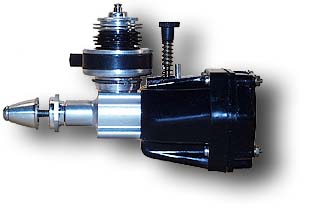
See below; The Cox "Ranger" .049 (credit-Aerotools/Martin Hepperle)
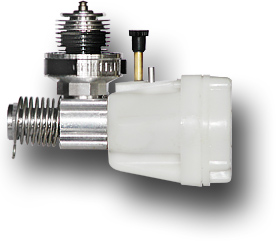
See below; The Cox "RC Bee" .049 (credit-Aerotools/Martin Hepperle)

My Cox spare parts sheets from 1991, 1992 and 1994 show some common parts with the Babe Bee, Product engine, Texaco, QRC and Medallion.
Before I confuse you too much... I checked the forum's cylinder (.049/.051) charts. The Dragon fly is listed to have DUAL-BYPASS ports with a BOOSTER on each, NO SPI and top-fin IS MILLED. This seems to be consistent with a #6 cylinder description.
The 1991 (#4501) Dragonfly in my list has the throttle/muffler assy. to be the same (#20467) as the Medallion .049 (#2501) of that year.

The cyl./piston/rod assy. (#20468) is shared with the Medallion .049 (#2501) engine of that year.. and the "Texaco" .049 engine (1992 only..)
The case/crank/dr. plate assy. (#380) is shared with the Babe Bee, Product .049 engine and the QRC .049 engines of that year. Note that the Dragonfly pictured above (MH Aerotools photo) has a plain AL. "hex" drive-plate.
The NV/spring (#1968) is shared with the Product .049 engine of that year.
I mentioned the possibility of the Cox "RC Bee" and "Ranger" .049 engines having the same or similar tank backs as the Dragonfly. The Ranger has a tank back that looks exactly like the Dragonfly's.
I think that the below photos are from a Kyosho/Cox kit that used the Ranger engine.

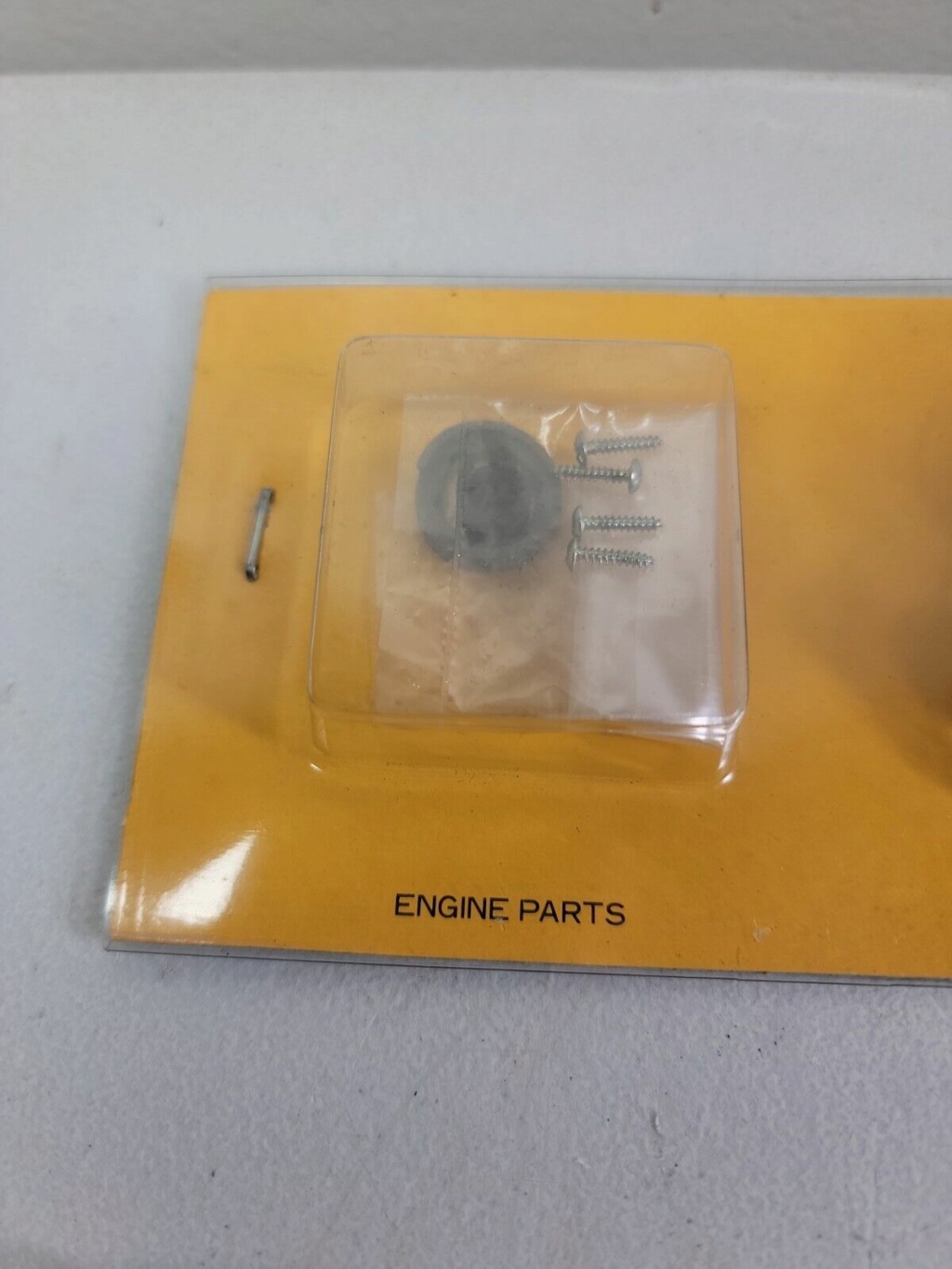
See below; The Cox "Dragonfly" .049 (credit-Aerotools/Martin Hepperle)

See below; The Cox "Ranger" .049 (credit-Aerotools/Martin Hepperle)

See below; The Cox "RC Bee" .049 (credit-Aerotools/Martin Hepperle)

My Cox spare parts sheets from 1991, 1992 and 1994 show some common parts with the Babe Bee, Product engine, Texaco, QRC and Medallion.
Before I confuse you too much... I checked the forum's cylinder (.049/.051) charts. The Dragon fly is listed to have DUAL-BYPASS ports with a BOOSTER on each, NO SPI and top-fin IS MILLED. This seems to be consistent with a #6 cylinder description.
The 1991 (#4501) Dragonfly in my list has the throttle/muffler assy. to be the same (#20467) as the Medallion .049 (#2501) of that year.

The cyl./piston/rod assy. (#20468) is shared with the Medallion .049 (#2501) engine of that year.. and the "Texaco" .049 engine (1992 only..)
The case/crank/dr. plate assy. (#380) is shared with the Babe Bee, Product .049 engine and the QRC .049 engines of that year. Note that the Dragonfly pictured above (MH Aerotools photo) has a plain AL. "hex" drive-plate.
The NV/spring (#1968) is shared with the Product .049 engine of that year.
I mentioned the possibility of the Cox "RC Bee" and "Ranger" .049 engines having the same or similar tank backs as the Dragonfly. The Ranger has a tank back that looks exactly like the Dragonfly's.
I think that the below photos are from a Kyosho/Cox kit that used the Ranger engine.


Last edited by roddie on Sun Oct 29, 2023 5:11 pm; edited 2 times in total (Reason for editing : added info.)
 Re: Cox Dragonfly
Re: Cox Dragonfly
I have all 3 engines.
The R/C Bee, besides using the short lived cast crankcase, tank used a flat plastic plate back. All three share the same tank but in different colors.
Both the Dragonfly and Ranger, Cox rotated the cylinder horizontal to get the muffler exhaust away from the intake venturi opening at the top front of the tank. This was to minimize exhaust gas recirculation, diluting the fuel-air mixture and reducing power.
The Dragonfly with R/C rotating exhaust throttle muffler and Ranger that used only a muffler have an extended tank back that added a few more cc's to fuel capacity.
Ex Model Engines has the R/C Bee tank back (although they call it Ranger), but it is molded in white plastic.
http://www.exmodelengines.com/product.php?productid=17611&cat=268&page=1
Their gaskets:
http://www.exmodelengines.com/product.php?productid=18107&cat=268&page=2
Will work on all three tanks.
You can use this tank back, only thing is it will reduce fuel capacity to that of the R/C Bee. I got about 4 minutes flight with that engine.
The clunk on these are small, I suppose one could make one by soldering a nut onto a small section of brass or copper tubing. Standard silicon half-A fuel line is too stiff to give good clunk action. I used this on my R/C Bee because clunk action wasn't needed for single channel rudder only with auxiliary sequential throttle.
The odd OEM rubber fuel tubing on my R/C Bee eroded a short time similar to surgical rubber tubing by the solvent action of the fuel, necessitating replacement.
Some have used I think 14 gauge silicon insulation salvaged from household or electronic wires. It is thin enough to restore clunk action.
Cox looped the R/C Bee's fuel tubing because the tank fuel barb is too close to the back. You will probably have to do that if you opt for the flat white back.
The R/C Bee, besides using the short lived cast crankcase, tank used a flat plastic plate back. All three share the same tank but in different colors.
Both the Dragonfly and Ranger, Cox rotated the cylinder horizontal to get the muffler exhaust away from the intake venturi opening at the top front of the tank. This was to minimize exhaust gas recirculation, diluting the fuel-air mixture and reducing power.
The Dragonfly with R/C rotating exhaust throttle muffler and Ranger that used only a muffler have an extended tank back that added a few more cc's to fuel capacity.
Ex Model Engines has the R/C Bee tank back (although they call it Ranger), but it is molded in white plastic.
http://www.exmodelengines.com/product.php?productid=17611&cat=268&page=1
Their gaskets:
http://www.exmodelengines.com/product.php?productid=18107&cat=268&page=2
Will work on all three tanks.
You can use this tank back, only thing is it will reduce fuel capacity to that of the R/C Bee. I got about 4 minutes flight with that engine.
The clunk on these are small, I suppose one could make one by soldering a nut onto a small section of brass or copper tubing. Standard silicon half-A fuel line is too stiff to give good clunk action. I used this on my R/C Bee because clunk action wasn't needed for single channel rudder only with auxiliary sequential throttle.
The odd OEM rubber fuel tubing on my R/C Bee eroded a short time similar to surgical rubber tubing by the solvent action of the fuel, necessitating replacement.
Some have used I think 14 gauge silicon insulation salvaged from household or electronic wires. It is thin enough to restore clunk action.
Cox looped the R/C Bee's fuel tubing because the tank fuel barb is too close to the back. You will probably have to do that if you opt for the flat white back.

GallopingGhostler- Top Poster


Posts : 5724
Join date : 2013-07-13
Age : 70
Location : Clovis NM or NFL KC Chiefs
 Re: Cox Dragonfly
Re: Cox Dragonfly
GallopingGhostler wrote:
The clunk on these are small, I suppose one could make one by soldering a nut onto a small section of brass or copper tubing. Standard silicon half-A fuel line is too stiff to give good clunk action. I used this on my R/C Bee because clunk action wasn't needed for single channel rudder only with auxiliary sequential throttle.
The odd OEM rubber fuel tubing on my R/C Bee eroded a short time similar to surgical rubber tubing by the solvent action of the fuel, necessitating replacement.
Some have used I think 14 gauge silicon insulation salvaged from household or electronic wires. It is thin enough to restore clunk action.
Cox looped the R/C Bee's fuel tubing because the tank fuel barb is too close to the back. You will probably have to do that if you opt for the flat white back.
That's good info. to know George.


Ken, I think I can help you out with the clunk. I recently bought (through Amazon) some really small outer diameter silicone tubing. Here's a photo comparing its size to some Dubro sm. size silicone line. I'll slip a few inches into an envelope and mail it to you if you're interested.
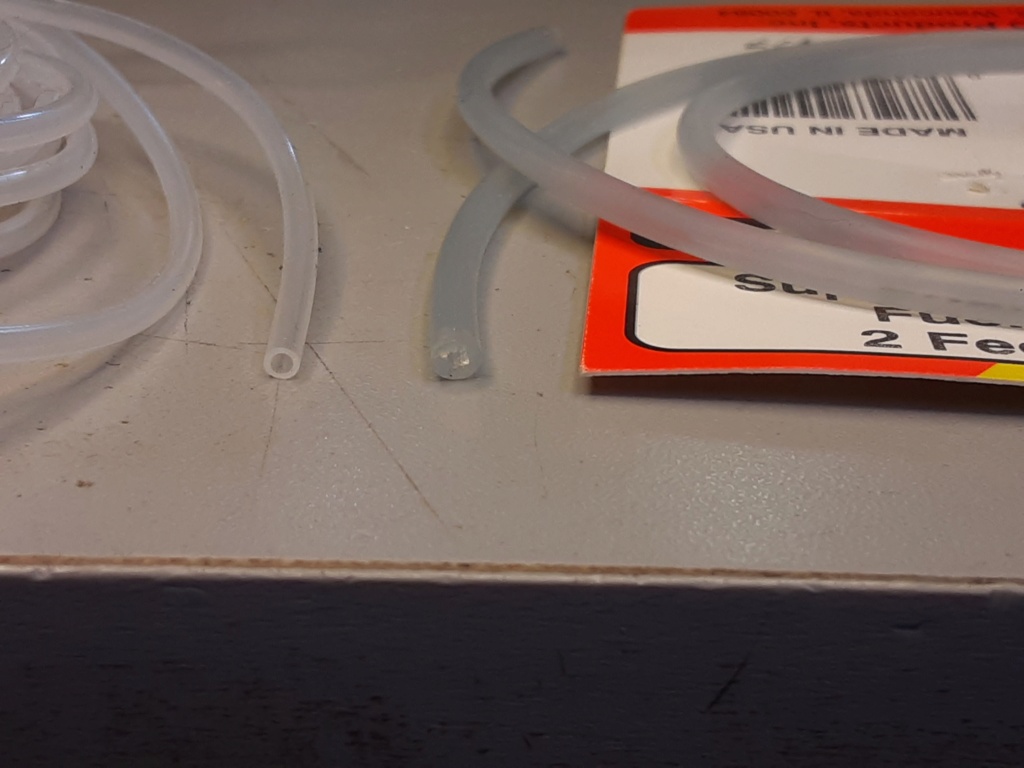
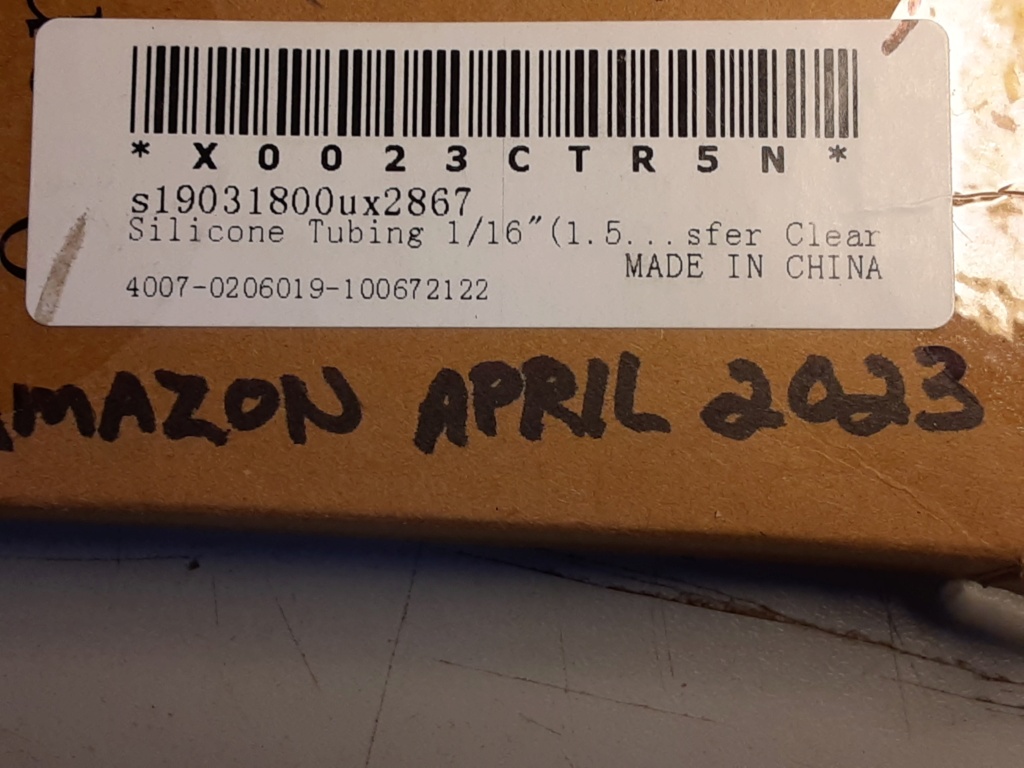
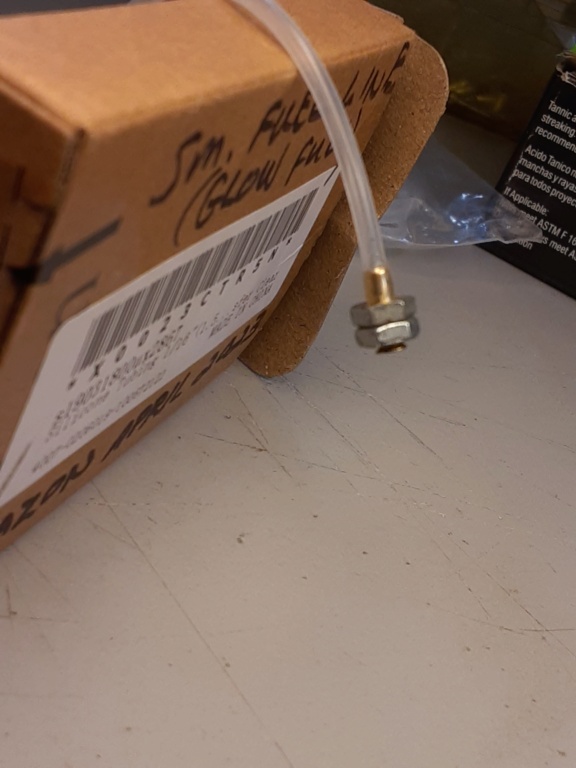
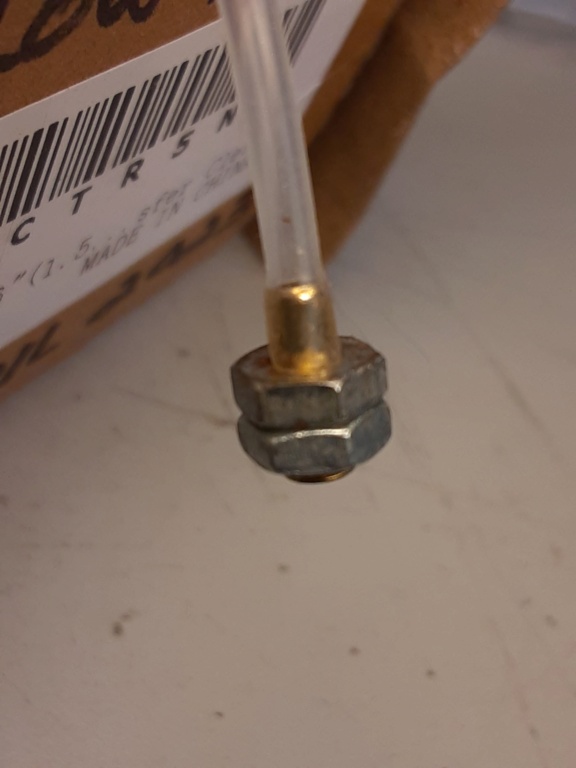
That's a small Perfect lead-out guide. Using lead instead of the hex nuts would be better.. but you get the idea.
Last edited by roddie on Sun Oct 29, 2023 6:20 pm; edited 1 time in total
 Re: Cox Dragonfly
Re: Cox Dragonfly
May I add, similar to what Cox International and Ex Model Engines have expressed, the R/C Bee's use of the cast crankcase requires a slightly different reed valve setup, because of dimensional difference between it and the standard extruded crankcase.
So regarding swapping tanks, I'd have to diassemble my specimens to verify, which is not practical for this moment. (Relocating near @Kim 's country. )
)
But I needed to verify these facts, as a few months ago, I made a custom Bee engine with a yellow powder coat cast crankcase and 8 cc plastic tank.
Regarding the longevity of the cast crankcase, I have a high mileage R/C Bee, and it seems to be just as durable as the extruded crankcase.
However, differences in the two crankcases may limit parts exchanges between the three extended plastic tank engines.
Otherwise, I have not heard any bad vices regarding these, and extra tank capacity do make them nice park flying engines.
My House of Balsa 34 inch span Stealth Sport kit shows use of the Dragon Fly engine in its nose.
So regarding swapping tanks, I'd have to diassemble my specimens to verify, which is not practical for this moment. (Relocating near @Kim 's country.
But I needed to verify these facts, as a few months ago, I made a custom Bee engine with a yellow powder coat cast crankcase and 8 cc plastic tank.
Regarding the longevity of the cast crankcase, I have a high mileage R/C Bee, and it seems to be just as durable as the extruded crankcase.
However, differences in the two crankcases may limit parts exchanges between the three extended plastic tank engines.
Otherwise, I have not heard any bad vices regarding these, and extra tank capacity do make them nice park flying engines.
My House of Balsa 34 inch span Stealth Sport kit shows use of the Dragon Fly engine in its nose.

GallopingGhostler- Top Poster


Posts : 5724
Join date : 2013-07-13
Age : 70
Location : Clovis NM or NFL KC Chiefs
Page 1 of 1
Permissions in this forum:
You cannot reply to topics in this forum

 Rules
Rules







